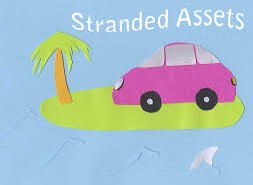Too Much Carbon is a Financial Risk
I wish to challenge the long held view by a large part of the investment community
Myth 1- The days where investment and asset managers can see environmental analysis as an optional risk are long gone
Myth 2 – Investing in environmentally friendly funds is no longer just a nice to have that could sacrifice some investment performance.
There is now more and more evidence supporting the view that ignoring environmental risk is creating financial risk. Nowhere is this more evident than in the area of Carbon Risk.
The environmental damage caused by the continuation of carbon emissions at their current rate has been a political message that we have become very used to over the last number of years. It has taken sometime however for this to permeate into the narrative of the financial industry. We are, at last, however starting to see leading financial spokesmen rise to the challenge.
In September 2015 Mark Carney, Governor of the bank of England sent one of the strongest messages yet as to the financial impact of climate change. Commenting on weather-related events that can be linked to climate change he stated that ‘since the 1980’s the number of registered weather-related events has tripled and inflation-adjusted insurance losses from these events have increased from an annual average of around $10bn in the 1980’s to around $50bn over the past decade.
The commercial implications of this are significant. Most importantly there is a growing consensus that as much as 80% of proved fossil fuels will have to be left in the ground to avoid catastrophic climate change.
We are also now starting to hear more and more of the term ‘stranded assets’, that is those assets held by companies in fossil fuel-related industries that are, in effect, a wasted asset. So how is this playing through in the investment markets?
There are some interesting indicators already coming through. For example MSCI, one of the world’s best known index providers, have developed their ‘Ex- Fossil Fuels Index’ excluding companies that own oil, gas and coal reserves. Since its launch in November 2010 to the end of October 2015 its average annualised performance was 10.27% compared with 9.07 for the standard index. It’s also outperformed the main index in all of the last 3 years.
It is fair to say that other shorter term factors are impacting performance, such as reduced demand from China and low oil price, but longer term trends are definitely coming through.
At a recent seminar I attended Henderson Global Investors, a leading environmental asset manager, highlighted the fortunes of two companies at different ends of the carbon spectrum. Peabody Energy is the largest private sector coal company in the world. Over the last 5 years its share price has fallen from over $800 a share to just over $13. By comparison Tesla ,the electric car company, who are investing massively in solar to reduce the coast of batteries, have seen their share price rise over the same period from $30 to over $200 a share.
Investment houses, like Henderson, therefore recognise ‘stranded assets’ as something they must be tuned into. As a result it could be strongly argued that those asset managers that really understand this will still a lead over those that don’t.
Oxford University’s Smith School of Enterprise and the Environment have a programme dedicated to the systematic analysis of the subject. Ben Caldecott, director of the programme, comments ‘there are some real leaders, but there are lots of investment managers who do not really know what they are doing. There is lots of research showing this stuff is financially material (but they have not yet integrated it into investment processes’.
As an investor the message should be contact an adviser, like myself, who understands this risk and can point you towards funds which will avoid it!.
Please subscribe for future newsletter
